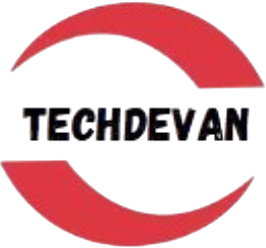The Apple Vision Pro, Apple’s foray into mixed reality, has garnered significant attention since its release. Positioned as a “spatial computer,” it aims to seamlessly blend digital content with the physical world. While its design and capabilities are commendable, the device also faces challenges that highlight the complexities of pioneering a new technological frontier.
More Read: Getting Started with Cryptocurrency: A Beginner’s Guide
A Leap into Spatial Computing
Apple’s Vision Pro represents a significant step in spatial computing, integrating high-resolution displays, advanced sensors, and intuitive controls. The device boasts dual micro-OLED displays with a resolution of approximately 3660×3200 per eye, delivering crisp visuals.
Its array of 12 cameras, LiDAR sensors, and eye-tracking technology enables precise interaction with digital content. Users can navigate interfaces using hand gestures, eye movements, and voice commands, creating an immersive experience that blurs the line between the virtual and real worlds.
Design Excellence Meets Practical Challenges
The Vision Pro’s sleek design, featuring a curved laminated glass front and aluminum frame, reflects Apple’s commitment to aesthetics. However, the device’s weight, ranging from 600 to 650 grams (excluding the external battery), can lead to discomfort during extended use. Additionally, the external battery offers only 2 to 2.5 hours of usage, limiting its practicality for prolonged sessions.
Productivity and Entertainment: A Mixed Bag
In terms of productivity, the Vision Pro offers features like the “Mac Virtual Display,” allowing users to mirror their Mac screen in a virtual environment. This can enhance multitasking and focus. However, the limited battery life and the need for a tethered battery pack can hinder mobility and long-term use.
For entertainment, the device provides immersive experiences, from watching movies on a virtual big screen to interactive gaming. Yet, the lack of native apps from major platforms like Netflix, YouTube, and Spotify at launch means users must rely on web versions, which may not offer the same level of integration or quality.
Accessibility: A Step Forward
Apple has introduced several accessibility features for the Vision Pro, aiming to make the device more inclusive. The “Braille Access” feature transforms Apple devices, including the Vision Pro, into braille note takers, supporting both connected braille devices and Apple’s Braille Screen Input. Enhanced zoom capabilities utilize the headset’s camera system, aiding users with visual impairments by magnifying their surroundings. Additionally, approved apps like Be My Eyes can access the main camera to provide real-time visual assistance.
Impact on Industries
Healthcare: The Vision Pro’s AR capabilities have the potential to revolutionize medical training and patient care. Surgeons can simulate procedures in a virtual environment, enhancing preparation and reducing risks. For mental health, VR environments can assist in exposure therapy, helping patients confront phobias in controlled settings.
Education: Educational institutions are exploring the Vision Pro’s potential to create immersive learning experiences. Complex subjects like anatomy or astronomy can be visualized in 3D, aiding comprehension. For students with learning disabilities, the interactive environment can offer alternative methods of engagement and understanding.
Retail and Fashion: Brands are leveraging the Vision Pro to offer virtual try-ons, allowing customers to see how products look in real-time. This not only enhances the shopping experience but also reduces return rates. Luxury brands are also creating immersive fashion shows, enabling users to experience collections virtually.
Challenges Ahead
Despite its innovations, the Vision Pro faces several hurdles:
- High Cost: With a starting price of $3,499, the device is a significant investment, potentially limiting its accessibility to a broader audience.
- Limited Battery Life: The external battery’s 2 to 2.5-hour lifespan restricts prolonged use, especially for professionals or gamers.
- App Ecosystem: The initial lack of native apps from major platforms affects the user experience, though this may improve over time as developers adapt to the new platform.
- Physical Comfort: The device’s weight and design may cause discomfort during extended sessions, which could deter long-term use.
Frequently Asked Question
What makes the Apple Vision Pro a “beautiful” device?
The Apple Vision Pro stands out for its premium design, high-resolution micro-OLED displays, and intuitive spatial interface. It offers a visually stunning and immersive experience, with eye tracking, gesture control, and voice commands that feel futuristic and polished. The craftsmanship—curved glass, aluminum housing, and adjustable fit—reflects Apple’s design excellence.
Why is the Vision Pro considered a “bumpy” step into the future?
Despite its innovation, the Vision Pro has a number of early adopter drawbacks:
- High price tag ($3,499 and up)
- Short battery life (2–2.5 hours)
- Heavy and bulky for extended use
- Limited native app support at launch
These hurdles suggest it’s still more a prototype of the future than a polished everyday device.
Is the Vision Pro practical for productivity?
It can be—especially with features like the Mac Virtual Display, which lets you mirror or extend your Mac in a giant virtual workspace. However, limitations like short battery life and the tethered external battery pack reduce mobility and long-session practicality. It’s promising, but not yet a laptop replacement.
How does the Vision Pro perform for entertainment and media?
The Vision Pro offers a cinematic experience for watching movies, browsing photos, and interacting with AR/VR apps. You can watch content on a massive virtual screen in environments like a theater or mountaintop. However, the lack of native apps from Netflix, YouTube, and Spotify means users must rely on web versions, which aren’t always optimized.
What industries are being impacted by the Apple Vision Pro?
Early adopters in industries like:
- Healthcare (surgical training, therapy),
- Education (interactive learning),
- Retail and fashion (virtual try-ons),
- Real estate and architecture (3D walkthroughs),
are beginning to explore its potential. The Vision Pro could revolutionize how professionals visualize data and interact with digital content.
How accessible is the Vision Pro for users with disabilities?
Apple has introduced robust accessibility features, such as:
- Braille Access with external devices
- Voice Control and AssistiveTouch
- Zoom via passthrough cameras
These innovations show Apple’s commitment to inclusion, though physical comfort and app availability still matter for usability.
Is the Apple Vision Pro worth buying now or should I wait?
If you’re a developer, tech enthusiast, or early adopter with the budget, the Vision Pro offers a glimpse of the future and a premium AR/VR experience. However, for most users, waiting for future versions with improved comfort, app support, and lower prices may be the smarter move.
Conclusion
The Apple Vision Pro stands as a testament to Apple’s vision of the future of computing. Its blend of design, technology, and innovation offers a glimpse into the potential of spatial computing. However, like any first-generation product, it comes with its set of challenges. As the technology matures and the ecosystem expands, the Vision Pro may well pave the way for a new era of interaction between the digital and physical worlds.






Leave a Comment